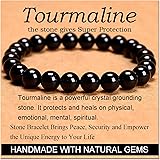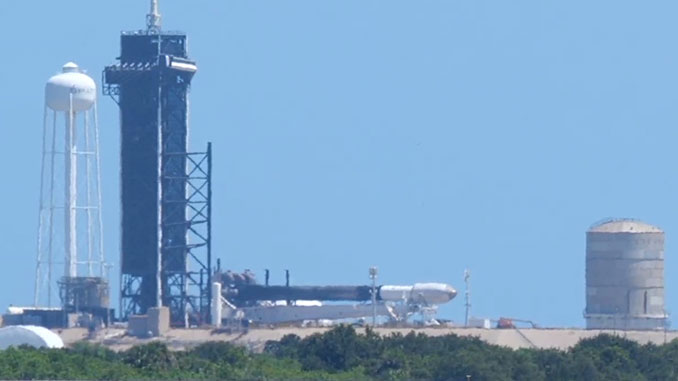This article was produced by National Geographic Traveller (UK).
Along the Passeig de Gràcia the tour groups flow, guidebooks in hand, smartphone cameras poised. The masters of modernista architecture crafted some of their greatest works on this elegant, tree-lined thoroughfare, which a century and a half ago led Barcelona from its congested medieval core into a new era of space, order and creativity.
Antoni Gaudí’s wonderfully elaborate Casa Batlló, with its iridescent glass-mosaic facade, and sprawling, limestone-hewn Casa Milà are two of the biggest prizes. The properties stand out, as indeed they were intended to, commissioned by wealthy families in fits of early 20th-century one-upmanship.
I’m in this affluent corner of the Eixample neighbourhood in search of artistry of a different sort. Away from the hedonism of some of its more downmarket spots, Barcelona takes its bar culture very seriously indeed. With its strident innovation, non-conformity and profusion of detail, it could be said to be keeping the spirit of modernisme alive. But there’s a crucial difference: this is a world that prizes the clandestine over the conspicuous.
Three blocks west of Passeig de Gràcia, hidden by day behind a graffitied steel shutter and on a bland residential street, is The Alchemix. The last rays of sunlight are filtering through the silver maples outside as I arrive, and there’s already a small queue of people. They’re smartly dressed, patient, as if waiting outside a theatre. In a sense they are.
Inside, owner Ignacio Ussía and his Estonian barman Erik Bagmet are concocting elaborate creations: spinning cocktail shakers, long-pouring, mixing, performing. A row of appreciative customers sits at the polished, spot-lit bar, entranced.
Nearly a dozen customised cocktails are on offer. Dressed in a smart khaki apron, with a powerful build and piratical beard, Ignacio asks me for a “frame of reference” before guiding me towards the white truffle pisco sour: a richly aromatic, creamy-yet-sweet blend of pisco quebranta, lemon juice, white truffle honey, Amargo Chuncho bitters and white chocolate served in a broad, stemmed glass.
Opened in March 2018, The Alchemix had a turbulent birth. Provoked by Madrid’s rejection of the result of the Catalonia secession referendum, pro-independence activists were in an incendiary mood. “Bins and cars were set alight. I remember opening at 7.30pm and having to close almost immediately,” recalls Ignacio. He won’t be drawn on the question of independence, but clearly enjoys that of his bar; it’s set apart, under-the-radar, easy to walk past. Visits, he says, are “intentional” — and that certainly needs to be the case with my next target.

The Alchemix opened in March 2018, and serves nearly a dozen customised cocktails.
Photograph by Margaret Stepien
When Catalan visionary Ildefons Cerdà drew up his masterplan for the grid-based district of Eixample (literally ‘Expansion’) in the mid-19th century, he devised an ingenious way to increase the visibility and sense of space at street level: he cleaved off the corners of all the blocks, so they become octagonal rather than square. It’s adjacent to one of these ‘chamfers’, tucked behind Passeig de Gràcia, that you’ll find another of the city’s best bars — or worst barbers, depending on your intent.
Entering Bobby’s Free, I’m ushered into a thick leather barber’s chair and spun round to face the mirror. Clippers, combs, shaving brushes and other props line the counter. The glint in the flat-capped hairdresser’s eye is the only sign that something might be afoot.
He raises his eyebrows expectantly. “Godfather,” I say, a touch hopefully. He nods his approval at the password, which I’d wrangled from my hotel concierge earlier, and reaches forward to activate a switch. The entire mirrored unit — draws, counter and all — swings open, and I step into the 1930s.
A century ago, speakeasies emerged in response to the vice-like grip of Prohibition in America, with both bar owners and patrons living in constant fear of detection. Today,
the danger is long gone but the frisson of the illicit lingers. This ‘underground’ establishment is precisely that: a short flight of steps leading down to a low-lit bar that’s absolutely bouncing.
Staff in red braces and trilbies glide between tables, delivering G&Ts and customised cocktails, one of which is served, with splendid illogicality, in a portable safe. Ray Charles and his Wurlitzer electric piano ooze from hidden speakers. A young man with a can’t-believe-I’ve-found-this-place smile slaps along on his thigh, too caught up in the moment to worry about anything as trivial as rhythm.
Behind the bar, Sofia D’Agnano is mixing up a storm. A photographer by day, the young Italian is in her element, feeding off the energy in the room and creating plenty of her own. As the music ramps up, a fellow bartender charges the length of the bar, pushing each of its domed, pendulous lights, which strafe the room with milky light. All the illuminated faces are beaming.
Shouting to be heard over the music, Sofia explains that what she loves about the bar is true of the wider city. “It’s all a question of good vibes.”
Into the labyrinth
Allow gravity to coax you down towards the city’s coastal fringe and the order of New Barcelona quickly gives way to the agreeable tumult of the Ciutat Vella, or old town. Here in the labyrinthine streets of Barri Gòtic (the Gothic Quarter) and El Born, it’s not just light but progress that can be kept at bay.
Dating from 1945, La Plata is a tiny corner bar tucked just out of sight on the seaward edge of Barri Gòtic. Its hand-painted sign, silver on blue like a flash of mackerel in the shallows, contrasts with the weathered Montserrat stone of the building’s thick-set walls. Ornate blue tiles frame a broad L-shaped bar where Pepe Gómez is orchestrating proceedings — as he has for 52 of his 67 years.


La Plata, in the city’s Barri Gòtic [Gothic Quarter], has been open since 1945 and serves four tapas on its unchanged menu.
Photograph by Margaret Stepien (Top) (Left) and Photograph by Margaret Stepien (Bottom) (Right)
I arrive soon after opening to grab one of the handful of tables. La Plata is the antidote to a choice-saturated world: just four simple tapas on the unchanging menu, breaded and fried whitebait (pescaditos) and Catalan-style butifarra sausage among them. Red, white and rosé are served in small tumblers from a trio of barrels fixed behind the bar. Nothing costs more than a few euros.
As he serves a regular ensconced with her tiny dog in a favourite spot at the bar, Pepe reviews the decades for me. In the 1970s and 1980s, the bar catered mostly to locals, but after the Olympics in 1992 — as with the wider city — visitors took on a more international flavour. Demand has never abated. “I think it’s the simplicity people love,” he says. “As we say, it’s a bar de toda la vida [for life]. Unchanging, traditional.”
That’s certainly not a charge that could ever be levelled at Paradiso, a few hundred yards away on the periphery of El Born. Since it opened in 2015, the speakeasy masquerading as a pastrami deli has bagged the world’s best bar accolade, staged pop-ups around the world and spawned an outpost in Dubai.
Never mind the paradox of a secret bar that’s globally renowned; befitting its surreptitious portal — an enormous fridge door adjacent to the deli counter — it’s still effortlessly cool, with a honey-hued, grooved-wood interior and a stylish crowd enjoying a soundtrack of smooth beats.
Andrea Freddi — Clark Kent glasses; leopards stalking the exotic rainforest scene on his Paradiso bartender’s uniform — talks me through the menu. The concepts are a tad nebulous (“Marco Polo — inspired by the compass”) but the Great Gatsby, Paradiso’s answer to the old fashioned, is sublime: 12-year-aged Macallan whisky, white truffle honey, amaro, lavender essence, scented with vanilla and chocolate tobacco — delivered with fanfare from beneath a smoking domed cloche, like the birth of a superhero.
Once settled in, I ask about the inner bar. There are a few exchanges and then the head bartender, Federico Lombardi, smiles and says, “Come with me”. Past the loos, turning right at the kitchen and into a tiny storeroom we go. “Ready?” Federico performs some sleight of hand on the basin and a secret door springs open.

85% of ingredients and spirits used in the cocktails-only Dr Stravinsky’s are homemade.
Photograph by Margaret Stepien
If Paradiso’s main bar evokes the inside of a whisky barrel, then this inner sanctum is more copper still, with candlelight reflecting off the low, amber-metallic ceiling. There’s barely room for a dozen people and access is both discretionary and sought-after; when Mick Jagger was in town, Federico tells me proudly, this was where he ended up.
Time for one more? In Barcelona, always. Exiting Paradiso, I allow myself to be drawn back into the web of El Born, where suddenly every flaking door is infused with the tap-and-whisper possibility of a speakeasy.
For centuries this quarter was the engine room of the city, home to a melee of artisans, craftsmen and workshops. Lanes assumed the name of the craft or industry concentrated there; hence Carrer dels Mirallers — street of mirrors — where I make my final and best discovery.
Dr Stravinsky sits inconspicuously on a dimly lit corner, with an arched window and dark wooden doors. Enter into the high-ceilinged burgundy-and-green space and you might fancy you’ve happened upon a laboratory or a cabinet of curiosities.
Hundreds of unmarked bottles and glass jars, beakers and cylinders line the shelves of the bar’s three levels. Mirrors, mottled and distorting, add a flavour of the surreal. Aproned and smiling, Rita Allué guides me to the bar and then in the direction of a fatty paloma, a smoky and citrussy blend of mezcal, Cajun syrup, Padrón peppers and homemade grapefruit soda.
Eighty-five per cent of the ingredients and spirits used in the bar are homemade. Branded bottles are outlawed. Only cocktails are served. If you want a beer or wine, some 1,400 other Barcelona bars await, thank you very much.
“You come here for the full cocktail experience,” explains manager Cesar Montilla. Dressed in a dark shirt with a neat red tie, and his moustache twirled into Dalí-esque points, Cesar is never happier than when chatting maturation, maceration and distillation, or debating micro-adjustments to his latest creations. “It’s all about chasing perfection,” he says earnestly. An art form? “Totally.”
He’s delighted that I’ve chanced upon the bar as I’ve strolled through the neighbourhood. “I always say we’re hiding but also not hiding,” he says. “Some people walk by, some discover us. We’re a treasure in Barcelona’s labyrinth.”
This story was created with the support of Barcelona Tourism, the Spanish Tourist Office, Vueling and Nobu Hotel Barcelona.
Published in the Jul/Aug 2024 issue of National Geographic Traveller (UK).
To subscribe to National Geographic Traveller (UK) magazine click here. (Available in select countries only).
Note: This article have been indexed to our site. We do not claim legitimacy, ownership or copyright of any of the content above. To see the article at original source Click Here












